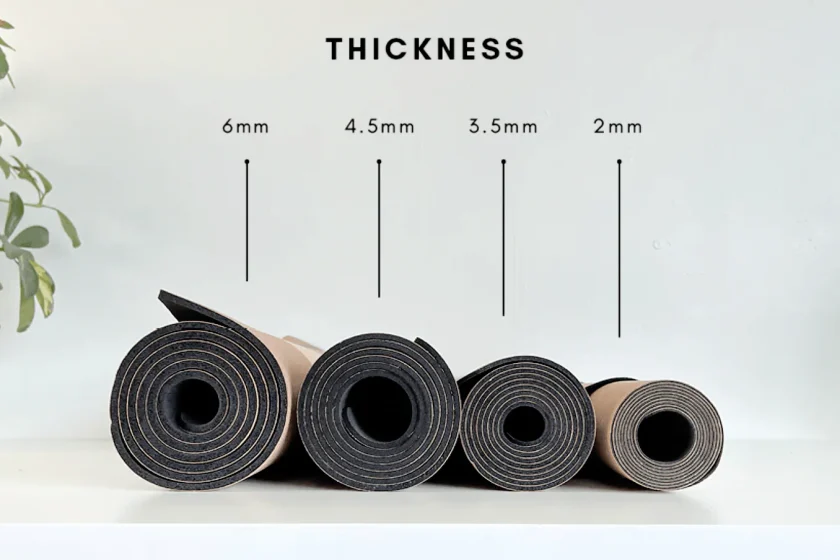Contents
Choosing the right yoga mat is essential for both comfort and performance during your yoga practice. One crucial aspect to consider when selecting a mat is its thickness.
Yoga mats come in various thicknesses, and each thickness offers different benefits and drawbacks depending on your practice style, experience level, and personal preference. A mat that is too thin may provide insufficient cushioning for your joints, while a mat that is too thick may hinder stability and balance. Understanding how to effectively measure yoga mat thickness is vital for making an informed purchase.
In this article, we’ll guide you through practical steps on how to measure yoga mat thickness accurately and why it matters in your yoga journey.
Knowing how to measure yoga mat thickness will help you select the perfect mat that suits your needs, enhances your performance, and keeps you safe while practicing. This comprehensive guide will delve into different measurement methods, explore the benefits of various thicknesses, and offer tips on choosing the right mat for your yoga journey.
Why Yoga Mat Thickness Matters
The thickness of your yoga mat can significantly impact your practice, offering pros and cons that can either enhance or detract from your overall experience. Here are some reasons why understanding yoga mat thickness is essential:
Joint Protection – The Role of Thickness in Comfort
A thicker mat provides better cushioning and support, which is particularly important for poses that place pressure on your joints, such as kneeling postures and seated positions. Thicker mats (around 5-6 mm) tend to absorb impact better and reduce the risk of joint discomfort during practice.
When measuring, consider how much cushioning you need based on your practice style and any existing injuries. If you have sensitive knees or joints, opting for a thicker mat can greatly enhance your comfort level throughout your session.
Stability and Balance – Finding the Right Thickness
While a thicker mat offers cushioning, it can sometimes compromise stability in balancing poses such as Tree Pose or Warrior III. Thinner mats (around 1-4 mm) provide a more grounded feel, allowing you to maintain better balance and connection with the floor.
When selecting a mat, measure the thickness against your specific needs—if you focus on balance poses, a thinner mat might be more suitable. Ultimately, finding the right balance between cushioning and stability is key to enhancing your practice.
How to Measure Yoga Mat Thickness: Tools You Need
Measuring the thickness of your yoga mat can be done with simple tools that you may already have at home. Here’s what you’ll need:
Materials Required
- Ruler or Measuring Tape: A flexible measuring tape works best, but a straight ruler can also suffice.
- Flat Surface: Ensure you have a flat, even surface to get an accurate measurement.
- Notebook and Pen: To jot down your findings, especially if comparing multiple mats.
Measuring Steps
- Lay your yoga mat flat on the ground, ensuring there are no wrinkles or folds.
- Using the measuring tape or ruler, measure the thickness by placing the tool vertically against the edge of the mat.
- Take note of the measurement in millimeters (mm) for accuracy.
- If you’re measuring multiple mats, repeat the process for each one and record your findings.
Choosing the Right Thickness for Your Practice
Understanding your practice style is crucial in selecting the right mat thickness. Here’s a breakdown of recommended thicknesses based on different yoga practices:
For Restorative and Gentle Practices
If you practice restorative or gentle yoga, opt for a thicker mat (5-6 mm). These mats provide ample cushioning needed for longer holds and gentle stretches. Thicker mats are excellent for supporting your body in poses that require relaxation and comfort.
When trying out different options, consider how the thickness feels during your practice—comfort is key.
For Vinyasa or Power Yoga
Vinyasa and Power Yoga often involve dynamic movements and transitions. A medium thickness mat (around 4-5 mm) works best for these practices, offering a balance of cushioning and stability. This thickness allows for adequate support during intense flows while still maintaining a solid grip on the ground.
Test your options during a practice flow to see how the thickness affects your movements and balance.
For Advanced or Balance-Focused Practices
If your focus is on advanced poses or balance work, consider a thinner mat (1-3 mm). These mats provide a closer connection to the ground, enhancing stability and control during challenging poses.
When selecting a thinner mat, ensure that it still provides enough grip and comfort for your practice.
Safety Considerations When Measuring and Using Mats
While measuring your yoga mat thickness is straightforward, it’s essential to keep safety in mind during both the measuring process and while practicing. Here are a few tips:
Ensure Accurate Measurements
When measuring, make sure the mat is laid out flat without any folds or creases, as this can lead to inaccurate measurements. Inaccurate thickness can result in discomfort or instability during your practice.
Double-check your measurements for accuracy, especially if you’re shopping for a new mat based on these numbers.
Use Non-Toxic Materials
When selecting a mat, consider the materials used in its construction. Some mats can be made from toxic chemicals that might emit harmful fumes. Opt for mats made from eco-friendly materials such as natural rubber or TPE.
Research the brands to ensure they prioritize safety and sustainability in their products.
Measuring yoga mat thickness is an essential step in selecting the right mat that enhances your practice. By understanding how thickness affects comfort, stability, and overall performance, you can make informed decisions that cater to your individual needs. Keep the measurement methods, thickness recommendations, and safety considerations in mind as you prepare for your yoga journey. With the right mat, you’ll experience a more enjoyable and effective practice, paving the way for growth, strength, and tranquility on the mat.

